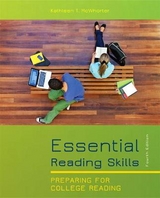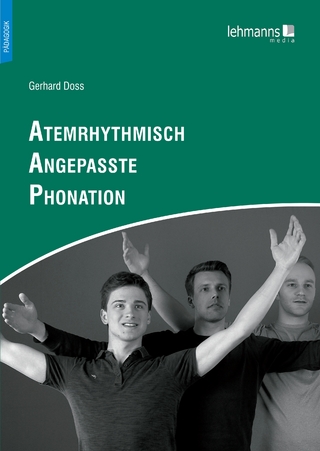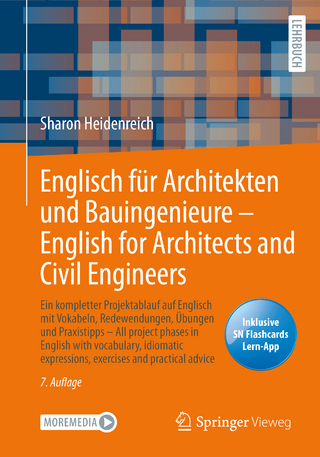
Essential Reading Skills
Pearson (Verlag)
978-0-321-42993-3 (ISBN)
- Titel erscheint in neuer Auflage
- Artikel merken
Chapter Reading Selections
Preface
1. Reading Actively
Starting with a Positive Attitude
Improve Your Surroundings
Pay Attention
Previewing Before You Read
How to Preview
Demonstration of Previewing
Guide Questions
Putting Your Positive Attitude to Work
The Textbook Challenge
What Have You Learned?
What Vocabulary Have You Learned?
Test-Taking Tip #1: Active Test-Taking
Reading Selection: To Love and to Cherish by Michelle Kearns (Mastery Test 1-3)
2. Using Your Dictionary
Buying a Dictionary
Using a Dictionary
Abbreviations
Word Pronunciation
Etymology
Multiple Meanings
Spelling
Idioms
Other Aids
Pronouncing Unfamiliar Words
Using Word Mapping to Expand Your Vocabulary
The Textbook Challenge
What Have You Learned?
What Vocabulary Have You Learned?
Test-Taking Tip #2: Taking Vocabulary Tests
Reading Selection: We Don’t Have AIDS, But We Suffer, Too by Kerrel McKay (Mastery Test 1-3)
3. Building Vocabulary: Using Context Clues
What Is Context?
Types of Context Clues
Definition Clues
Synonym Clues
Example Clues
Contrast Clues
Inference Clues
Using All of the Context Clues
The Textbook Challenge
What Have You Learned?
Test-Taking Tip #3: Answering Vocabulary Questions
Reading Selection: Online Dating Sites Aren’t Holding People’s Hearts by Randy Dotinga (Mastery Test 3-3)
4. Building Vocabulary: Using Word Parts
What Are Word Parts?
Prefixes
Roots
Suffixes
Using Word Parts
The Textbook Challenge
What Have You Learned?
Test-Taking Tip #4: Using Word Parts
Reading Selection: Saved by the Kindness of a Virtual Stranger by Mark Zelermyer (Mastery Test 3-3)
5. Locating Main Ideas
What Is a Main Idea?
Understanding General versus Specific Ideas
Identifying the Topic
Finding the Main Idea
Tips for Finding the Main Idea
Tips for Locating the Topic Sentence
Learning More about Paragraphs
The Textbook Challenge
What Have You Learned?
What Vocabulary Have You Learned?
Test-Taking Tip #5: Questions on the Topic and Main Idea
Reading Selection: Don’t Ask by Deborah Tannen (Mastery Test 4-3)
6. Identifying Supporting Details and Transitions
What Are Supporting Details?
What Are Transitions?
Putting It All Together
The Textbook Challenge
What Have You Learned?
What Vocabulary Have You Learned?
Test-Taking Tip #6: Answering Detail Questions
Reading Selection: How to Ace a Job Interview by Richard Koonce (Mastery Test 5-3)
7. Understanding Implied Main Ideas
What Does Implied Mean?
Remembering the Difference between General and Specific Ideas
How to Find Implied Main Ideas in Paragraphs
Working with Paragraphs
The Textbook Challenge
What Have You Learned?
What Vocabulary Have You Learned?
Test-Taking Tip #7: Answering Questions about Implied Main Ideas
Reading Selection: Primary Colors by Kim McLarin (Mastery Test 6-3)
8. Keeping Track of Information
Why Keep Track of Information?
Highlighting and Marking
Outlining
Mapping
Summarizing
Good Reasons to Keep Track of Information
The Textbook Challenge
What Have You Learned?
What Vocabulary Have You Learned?
Test-Taking Tip #8: Using Highlighting and Summarizing
Reading Selection: Body Piercing and Tattooing by Rebecca Donatelle (Mastery Test 7-3)
9. Recognizing the Basic Patterns of Organization
What Are Patterns of Organization?
Example
Definition
Combining Definition and Example
Chronological Order and Process
Listing
Combining Patterns of Organization
The Textbook Challenge
What Have You Learned?
What Vocabulary Have You Learned?
Test-Taking Tip #9: Answering Questions about Patterns
Reading Selection: Right Place, Wrong Face by Alton Fitzgerald White (Mastery Test 8-3)
10. Recognizing Comparison/Contrast and Cause/Effect Patterns
Comparison/Contrast Patterns
Comparison
Contrast
Using Both Comparison and Contrast
Cause/Effect Patterns
Moving beyond Patterns
The Textbook Challenge
What Have You Learned?
What Vocabulary Have You Learned?
Test-Taking Tip #10: Answering Questions about Comparison/Contrast and Cause/Effect
Reading Selection: When Mommy Goes Off to Fight a War by Peter Madsen (Mastery Test 9-3)
11. Reading and Thinking Critically
What Is Inference?
How to Make Inferences
Understanding a Writer’s Purpose
Style
Intended Audience
Language: Denotation and Connotation
Identifying Tone
Distinguishing Fact and Opinion
Facts
Opinions
Judgment Words
Understanding More of What You Read
The Textbook Challenge
What Have You Learned?
What Vocabulary Have You Learned?
Test-Taking Tip #11: Critical Reading Questions
Reading Selection: The Beautiful Laughing Sisters by Mary Pipher (Mastery Test 10-3)
Student Resource Guide A
Introduction to College Textbook Reading
Textbook Excerpt 1: Civil Liberties and the Right to Privacy
Textbook Excerpt 2: Food Safety: A Growing Concern
Textbook Excerpt 3: Legible Clothing
Student Resource Guide B
Test-Taking strategies: A Review
Student Resource Guide C
A Guide for ESL Readers
Multicultural Reader
1. The Most Hateful Words, Amy Tan
2. Seoul Searching, Rick Reilly
3. Coming into My Own, Ben Carson, M.D.
4. Living Life to the Fullest, Maya Angelou
5. Samerican Indian Mascots Should Go, Rich Heffern
6. Hispanic USA: The Conveyor-Belt Ladies, Rose del Castillo Guilbault
7. I Have Had To Learn To Live With Peace, Alephonsion
Credits
Index
| Erscheint lt. Verlag | 28.12.2006 |
|---|---|
| Sprache | englisch |
| Gewicht | 756 g |
| Themenwelt | Schulbuch / Wörterbuch ► Wörterbuch / Fremdsprachen |
| Geisteswissenschaften ► Sprach- / Literaturwissenschaft ► Sprachwissenschaft | |
| ISBN-10 | 0-321-42993-1 / 0321429931 |
| ISBN-13 | 978-0-321-42993-3 / 9780321429933 |
| Zustand | Neuware |
| Haben Sie eine Frage zum Produkt? |
aus dem Bereich



